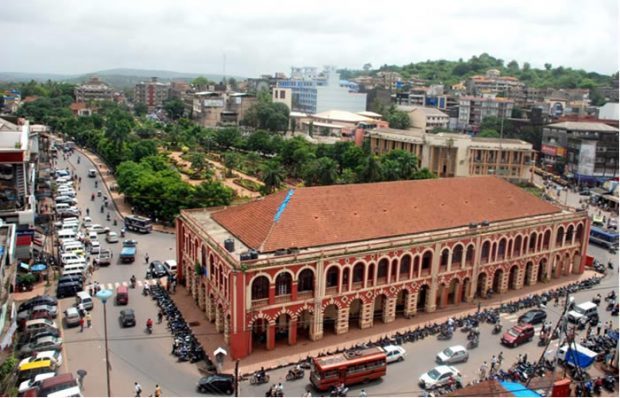Goa has five main towns, or cities if you will. Panjim, Mapusa, Vasco, Ponda, and Margao. While Panjim is the state capital, Margao city is considered to be the commercial capital of Goa. It’s also the second largest city in the state and a well-known cultural hub with a lot of Portuguese influences. The city also bears the distinction of being the administrative headquarters of Salcete sub-district and South Goa district.
A bustling city filled with history and Portuguese influences
Margao is a busy town, albeit crowded and filled with chaotic traffic. But the city also retains an old world charm. It is reminiscent of the Portuguese rule and filled with many Portuguese influences. South Goa is full of fertile fields and Margao is surrounded by these as well. The District Headquarters of South Goa Collectorate building is located in Margao as well, near Margao’s main KTC bus-stand.
It’s a city full of history. As one walks around certain areas in Margao, they can still see the Portuguese influences left behind. This is evident in the architecture of the old Goan homes, some of which can be called mansions. The Portuguese influences include high ceilings, enclosed balcãos (balconies) and wooden framed windows with either stained glass, oyster shell or mother-of-pearl. The Borda area of Margao is the best place to check this out. Funnily enough, while people refer to these old houses as Portuguese, you won’t find anything like this in Portugal.
History of Margao
The name of the city is believed to be derived from the word Mathgram (from Math – a Hindu religious center that used to exist there). One doesn’t see many of these now as most were destroyed when the Portuguese conquered Goa.
Margao is believed to have sprung from the site of the ancient Damodar temple. This was later brought down and the temple tank filled up to build the city’s oldest church, Largo de Igreja or the Church of the Holy Spirit. The Largo de Igreja, or the Church of the Holy Spirit as it is also known, dominates the entrance to the city. It was built by the Portuguese in 1675 and is one of the finest examples of late-Baroque architecture in Goa, boasting a pristine white façade and an interior dripping with gilt crystal and stucco. It lies just before the Municipal Gardens square. This church most recently celebrated the famed Purumentachem Feast.
The Portuguese influences seen in the homes in Margao can also be experienced in the surrounding villages of South Goa. Lotulim, Curtorim, Raia are some of these places full of homes and churches with Portuguese influences.
Geography of the city
As one moves deeper into the main city area, they encounter the Municipal Square. This is where a lot of offices and restaurants are located. The famous “Camara Municipal de Salcete” is also in the middle of this area. It catered to all the villages in Salcete Taluka for over 300 years until the Goa Municipalities Act 1968, came into force. The “Camara Municipal de Salcete” is now reconstituted into Margao Municipal Council. From here, there are bylanes that extend in different directions, leading to the market and what used to be the fish market. The fish market is now located near Margao’s main bus-stand before one enters the city proper.
The Margao market is a bustling one that is always crowded. People from the city, as well as surrounding areas, come in to do their daily shopping as well as buy souvenirs authentic of Goa and other great bargains.
Getting to Margao
Margao is accessible by road and rail. It lies approximately 33 kilometers from Panjim, which is about an hour’s drive. One can even get there by rail from Tivim, Karmali, and Vasco. It does, after all, have the biggest and busiest train station in the state. The Dabolim airport lies about an hour away as well with easy access by private car or taxi.
South Goa’s beautiful white sand beaches are all within driving distance of Margao as well. The famous Colva beach is a mere 3 kilometers away from the main city and well-known tourist spot. Other beaches include Benaulim, Sernabatim, Varca, and Cavelossim.
For more information on this great city, check out the below links:
Information credit – Above mentioned links
ItsGoa/MAY/KDGP


